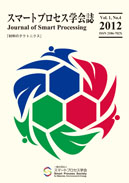Volume 6, Issue 1
Displaying 1-9 of 9 articles from this issue
- |<
- <
- 1
- >
- >|
-
Article type: Review Article
2017Volume 6Issue 1 Pages 4-6
Published: 2017
Released on J-STAGE: January 01, 2019
Download PDF (1309K) -
Article type: Review Article
2017Volume 6Issue 1 Pages 7-11
Published: 2017
Released on J-STAGE: January 01, 2019
Download PDF (2192K) -
Article type: Review Article
2017Volume 6Issue 1 Pages 12-16
Published: 2017
Released on J-STAGE: January 01, 2019
Download PDF (1864K) -
Article type: Review Article
2017Volume 6Issue 1 Pages 17-21
Published: 2017
Released on J-STAGE: January 01, 2019
Download PDF (3626K) -
Article type: Review Article
2017Volume 6Issue 1 Pages 22-27
Published: 2017
Released on J-STAGE: January 01, 2019
Download PDF (1526K) -
Article type: Regular Research Article
2017Volume 6Issue 1 Pages 28-32
Published: 2017
Released on J-STAGE: January 01, 2019
Download PDF (1162K) -
Effects of Laser Brazing Condition on Dissimilar Lap Joint Formation of Stainless Steel and TitaniumArticle type: Regular Research Article
2017Volume 6Issue 1 Pages 33-39
Published: 2017
Released on J-STAGE: January 02, 2019
Download PDF (973K) -
Article type: Regular Research Article
2017Volume 6Issue 1 Pages 40-45
Published: 2017
Released on J-STAGE: January 01, 2019
Download PDF (758K) -
Article type: Regular Research Article
2017Volume 6Issue 1 Pages 46-49
Published: 2017
Released on J-STAGE: January 01, 2019
Download PDF (1069K)
- |<
- <
- 1
- >
- >|
